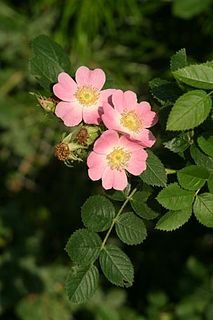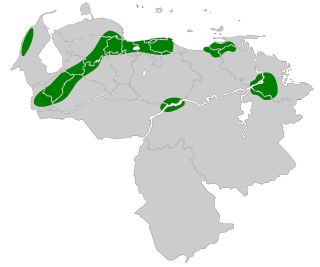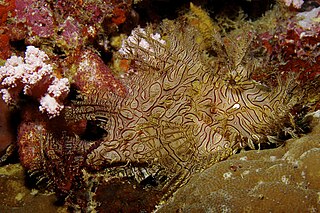
Herring are forage fish, mostly belonging to the family Clupeidae.

The rose subfamily Rosoideae consists of more than 850 species, including many shrubs, perennial herbs, and fruit plants such as strawberries and brambles. Only a few are annual herbs.

Aphanes (parsley-piert) is a genus of around 20 species in the rose family (Rosaceae), native to Europe, Asia and Australia. A 2003 study indicated that Aphanes may belong to the genus Alchemilla, commonly called lady's-mantle. They are slender, annual prostrate herbs, much-branched with deeply lobed leaves, pilose and on short petioles. The tiny green to yellow flowers without petals grow in clusters in the denticulate leaflike stipules.

Hypericum scopulorum is a species of flowering plant in the family Hypericaceae. It is endemic to Socotra, an island archipelago that is part of Yemen. It is a common plant in shrubland habitat, and it is a dominant species in some areas along with Cephalocroton and another local endemic, Helichrysum rosulatum.

Hypericum tortuosum is a species of flowering plant in the genus Hypericum. It is found only in Socotra, Yemen, where it is endemic. The species is an apomorphic relative of the other Socotran species in Hypericum sect. Triadenioides and is most closely related to Hypericum scopulorum. Its natural habitats are subtropical or tropical dry forests and subtropical or tropical dry shrubland.

Helicia is a genus of 110 species of trees and shrubs, constituting part of the plant family Proteaceae. They grow naturally in rainforests throughout tropical South and Southeast Asia, including India, Sri Lanka, Indochina, Peninsular Malaysia to New Guinea and as far south as New South Wales.
Lachemilla jamesonii is a species of plant in the family Rosaceae. It is endemic to Ecuador.
Lachemilla sprucei is a species of plant in the family Rosaceae. It is endemic to Ecuador.

Ocotea porosa is a species of plant in the Lauraceae, often placed in the related genus Phoebe. It is commonly called imbuia or Brazilian walnut because its wood resembles that of some walnuts. The tree is a major commercial timber species in Brazil, used for high-end furniture, mostly as decorative veneers, and as flooring. The wood is very hard, measuring 3,684 lbf on the Janka scale. The wood is also fragrant with hints of nutmeg and cinnamon. The tree is also a popular horticultural tree in subtropical regions of the world. In its native habitat it is a threatened species.
Rubus azuayensis is a species of plant in the family Rosaceae. It is endemic to Ecuador.
Rubus laegaardii is a species of plant in the family Rosaceae. It is endemic to Ecuador.

Turraeanthus africanus is a species of plant in the family Meliaceae, also known by the common names avodiré, apeya, engan, agbe, lusamba, wansenwa, African satinwood, and African white mahogany.

The ashy-tailed swift is a swift which is endemic to northern and central Venezuela.

Serruria florida is a species of flowering plant in the family Proteaceae, endemic to South Africa. It is known by the common names of blushing bride or pride of Franschhoek.

Rhinopias eschmeyeri or Eschmeyer's scorpionfish or paddle-flap scorpionfish, is a species of marine ray-finned fish belonging to the family Scorpaenidae, the scorpionfishes. This species is found in the Indo-West Pacific. It grows to an average size of 16.6 cm in length. It occasionally makes its way into the aquarium trade. Although some have raised questions as to whether R. eschmeyeri is a morphological variant of Rhinopias frondosa rather than a separate species, a 2006 study by Motomura and Johnson confirmed the species' existence and distinguished it from other members of the genus Rhinopias.

Rhinopias aphanes, the lacy scorpionfish, weedy scorpionfish or Merlet's scorpionfish, is a species of marine ray-finned fish belonging to the family Scorpaenidae, the scorpionfishes. This species is found in the Western Pacific. It occasionally makes its way into the aquarium trade.

Pyrus korshinskyi, also known as the Kazak pear or Bukharan pear, is a wild species of pear tree native to Central Asia, including Afghanistan, Kyrgyzstan, Tajikistan, and Uzbekistan. The Kazak pear is in the genus Pyrus (Rosaceae). The IUCN categorises the pear as critically endangered, with it surviving in remote areas with threats including over grazing, harvesting, and use for rootstock. Genetically the pear has potential use for reducing the impact of disease on domesticated pears.

Serruria furcellata, the Kraaifontein spiderhead, is a flower-bearing shrub that belongs to the genus Serruria and forms part of the fynbos. The plant is native to the Western Cape, it has always been found at Brackenfell, Kraaifontein and Kuils River.













